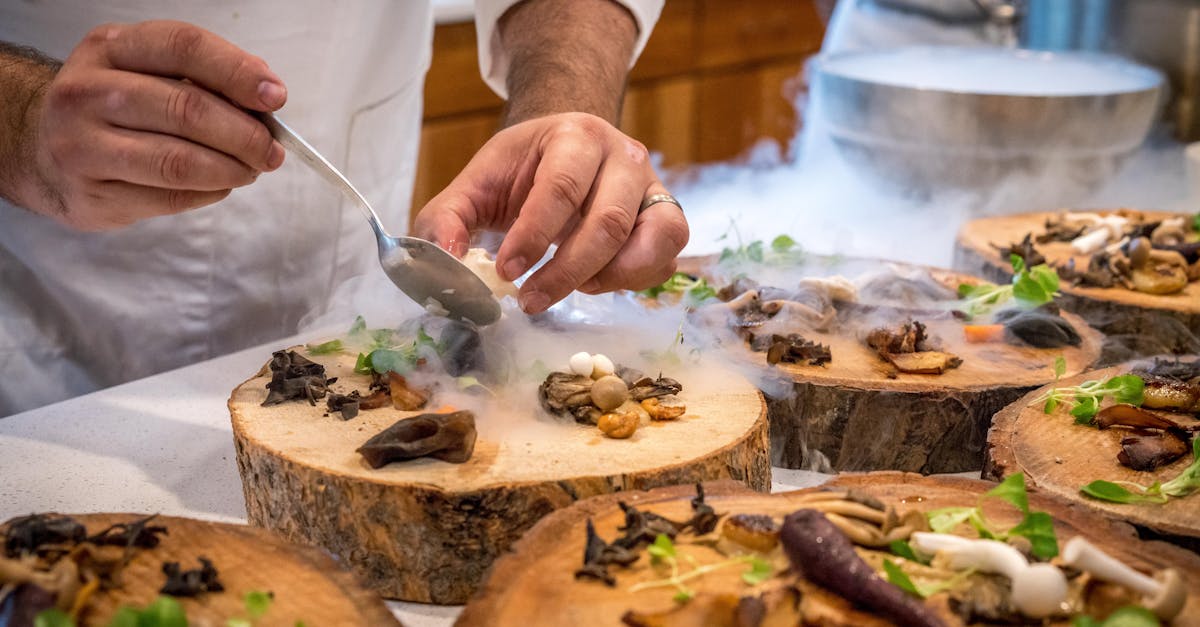Culinary Avante Garde Daily Digest Trend
Introduction
In an ever-changing world, culinary avant-garde has emerged as a tantalizing frontier, challenging traditional boundaries and redefining dining experiences. It’s a culinary movement marked by innovation, creativity, and the daring flair of chefs seeking to push the envelope beyond established norms. Turning the kitchen into a lab, culinary avant-gardists blend flavors, textures, and presentations to create a transformative experience. But what fuels the rise of this culinary revolution? How do these inventive dishes influence everyday eating habits? Join us as we delve into the rich world of avant-garde cuisine and explore how it's shaping the culinary landscape around the globe.
Advertisement
Unpacking Culinary Avant-Garde
Culinary avant-garde focuses on reshaping perceptions of food through cutting-edge techniques and ingredients. This movement isn't solely about presentation but also emphasizes elevating the sensory experience. Techniques like nitrogen freezing, spherification, and molecular gastronomy allow chefs to reimagine traditional dishes. This means diners might find staple foods, such as soup or pasta, redefined and plated in groundbreaking ways. Primarily, the focus remains firmly on balancing innovative flair with genuine gastronomic satisfaction. This notion has paved the way for creative experimentation in kitchens worldwide.
Advertisement
Innovative Techniques
The use of avant-garde techniques often requires scientific tools and an understanding of molecular chemistry. Techniques like sous-vide involve cooking food in vacuum-sealed bags at precise temperatures, enhancing flavor and texture. Liquid nitrogen is leveraged to instantly freeze ingredients, altering both texture and appearance. Edible foams, gels, and “airs” often grace plates as well, adding unexpected elements to dishes. Despite seeming complexity, these techniques focus on enhancing the purity of flavors. Technology, organization, and an appetite for reinvention fuel the ceaseless innovation in avant-garde kitchens.
Advertisement
The Chefs Leading the Charge
At the helm of the culinary avant-garde are visionary chefs with a desire to revolutionize the standard dining experience. Names like Ferran Adrià of El Bulli and René Redzepi of Noma have become synonymous with groundbreaking culinary art. These chefs view the plate as a canvas for creativity, continually challenging norms and differentiating by offering experiences that stimulate every sense. Their influence has grown beyond the walls of their kitchens, inspiring a generation of young chefs who are unafraid to experiment. This explorative nature has entrenched avant-garde as a crucial aspect of modern culinary culture.
Advertisement
Dining Experience Redefined
Culinary avant-garde isn't just about what's on the plate but also how it's experienced. From multisensory dining to interactive food experiences, every detail is crafted with the aim of transporting diners to novel culinary landscapes. Restaurants embracing this ethos prioritize ambiance, often incorporating avant-garde architecture and acoustics into their spaces. This enhances guests’ immersion, blurring lines between art and dining. The focus on experience extends from dishes served to the atmosphere of intimacy and uniqueness, ensuring that each visit is a memorable occasion.
Advertisement
Global Influence and Popularity
Culinary avant-garde has made its mark worldwide, transcending geographical and cultural boundaries. Although its roots trace back to Europe, its influence is evident in the East and West. Techniques developed in Spain or Denmark might find a unique application in Japan or the United States, with chefs exchanging ideas at international culinary events. This cross-pollination of ideas fuels an ever-evolving landscape, where chefs learn and adapt innovations to local tastes. As avant-garde cuisine gains popularity, everyday dining establishments gradually incorporate innovative elements, attempting to add an exotic touch to familiar cuisines.
Advertisement
Impact on Daily Cuisine
While full-on avant-garde dining is often reserved for unique occasions, its principles permeate everyday meals. Supermarkets carry ingredients once deemed exotic and inaccessible, reflecting how culinary innovation influences mainstream kitchen practices. Terms like "deconstructed" or "fusion" have entered everyday vernacular, reflecting broader acceptance of creative culinary combinations. Home cooks experiment with spices, textures, and presentation in their meal preparations, adopting a spirit of adventure. This ongoing push towards innovation enriches local food cultures, with culinary avant-garde being a key driving force.
Advertisement
Challenges and Criticism
Despite its allure, the culinary avant-garde faces challenges and criticism. For one, costs associated with specialized equipment and exotic ingredients can be prohibitive, impacting accessibility. Moreover, critics argue that overly complex presentations may overshadow genuine taste and nutrition. Skeptics see avant-garde as a trend that deviates from authentic food experiences. Nonetheless, proponents argue that it represents evolution in culinary arts, a way of embracing change and diversity. This balance between tradition and innovation remains a subject of ongoing debate.
Advertisement
The Future of Avant-Garde Cuisine
As technology advances and global dialogue deepens, the future of avant-garde cuisine looks promising. Chefs continue to push boundaries, experimenting with sustainable ingredients and zero-waste practices. New tools and equipment, like 3D food printers, promise to redefine culinary possibilities. While technology unlocks opportunities, there's also a nod towards preserving traditional knowledge and techniques. This integration of past and future reflects a core principle of avant-garde: continuous evolution while respecting culinary heritage. The future of this innovative cuisine lies in striking the perfect harmony between creativity and authenticity.
Advertisement
Conclusion
Culinary avant-garde stands infectious in its courageous disregard for convention and relentless pursuit of innovation. This movement engages chefs, diners, and cultures in a rich dialogue, emphasizing that food can be a form of art and expression. The ripple effects extend beyond elite dining circles, inspiring innovation in everyday kitchens and reshaping gastronomic traditions globally. As we savor this era of culinary exploration, the avant-garde's legacy will likely endure, continually urging the food world to explore the uncharted, embodying the courage to innovate time-tested façades and redefine our dining horizons.
Advertisement





